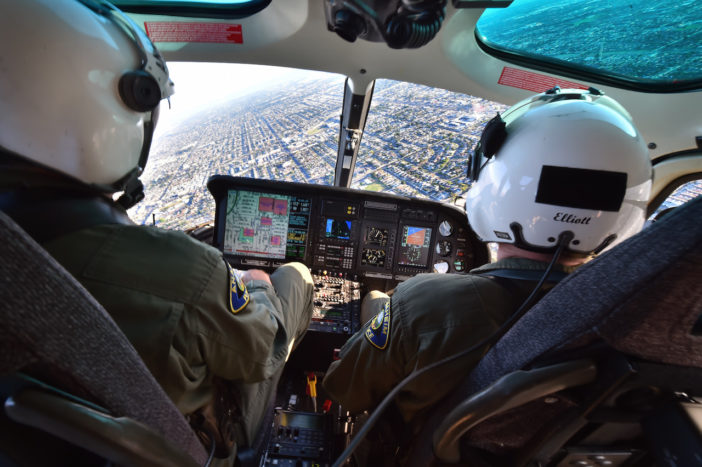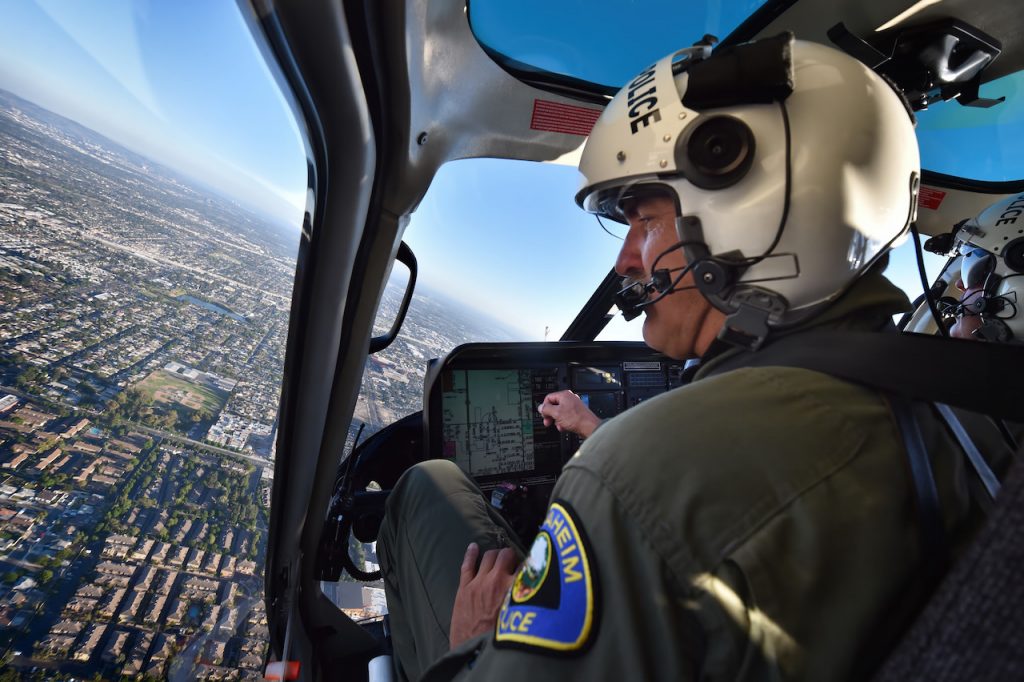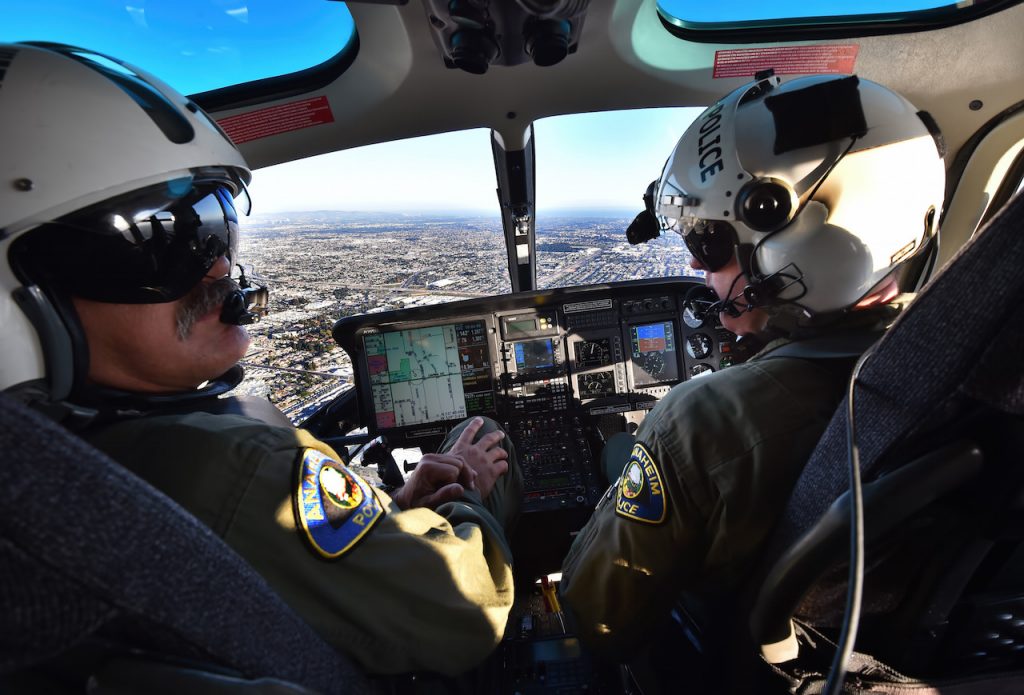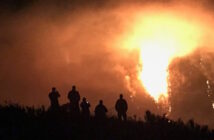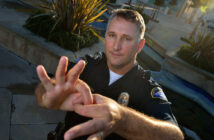Angel is watching over the city as the sun sets on a hot August day. Anaheim PD’s Air Support Bureau is cruising at 1,200 feet above it all, and below, the streets are a safer place because of it.
Tactical Flight Officer Jay Poland monitors current calls and a mapping system on a laptop-sized computer screen, while Officer/Pilot Jimmy Elliott watches the gauges and flies the helicopter, nicknamed Angel. In short, one handles the police work and the other handles the flying, but either one can help the other if the situation calls for it.
“There’s so much more happening in the cockpit than someone flying a plane from point A to B,” says Poland.

Anaheim PD Pilot Jimmy Elliott, left, and Tactical Flight Officer Jay Poland in front of the police helicopter nicknamed Angel.
Photo by Steven Georges/Behind the Badge OC
In 2016, Air Support Bureau officers spent 2,425 hours above the city. With that much time in the air, Angel or her back-up can reach their FAA-required, every-100-hour maintenance check ups about every three weeks.
While no one will argue that an air support unit is cheap, all that time in the air does create an impact as significant as when police departments first switched from the horse and carriage to automobiles in the early 20th Century. The amount of man hours and manpower saved, as well as increased effectiveness, is easy to put into words.
“Studies say we’re equal to 20 cops,” says Sgt. Bryan Santy. “We get there first because we don’t have to fight traffic. We get people before they get away.”
Air Support was first at the scene 66 percent of the time last year and initiated 28 arrests, very much in keeping with their average. They assisted in another 626 arrests, including 45 pursuits.
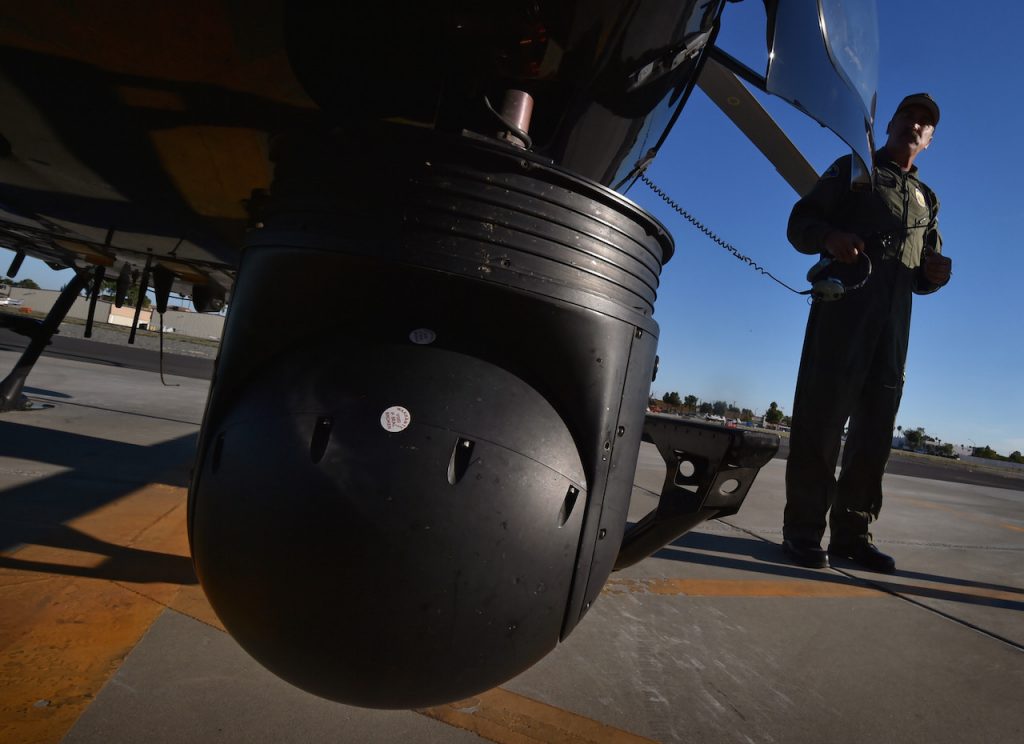
Tactical Flight Officer Jay Poland stands next to one of two camera systems, owned by the Anaheim PD, installed under the police helicopter nicknamed Angel. The camera system is a high-definition camera, a low-light camera, and an HD-FLIR (forward looking infrared) camera. The million-dollar camera system is detachable and can be moved from aircraft to aircraft depending on the agency’s needs.
Photo by Steven Georges/Behind the Badge OC
Officers in a helicopter generally orbit near the center of the city at approximately 75 miles per hour, allowing them to be at the scene of any call within about one minute. It’s an ability that not only helps officers, for example, spot suspects fleeing the scene of a robbery and keep an eye on them before they disappear, but can also spare other officers from having to respond to a call that ends up being nothing.
“We could have them chasing speeding cars all day, but we don’t want to overtax ground units,” Poland says. Air Support was able to cancel more than 360 calls last year. “It really matters to the guys on the ground that we can do that.”
If someone is lost in the local hills and can still talk on a phone, it’s relatively easy for Air Support to find them. If someone is trying to hide in those same hills, as was recently the case, it takes a bit more work, but FLIR thermal imaging cameras attached to the bottom of the helicopters helped locate 28 people last year. Regardless, Air Support can slash hours — even days — off the time it takes to locate, rescue or capture people.
If your car was the thing that was lost, Air Support might have helped with that, too. There were 56 LoJack-equipped vehicles located in 2016, resulting in 30 arrests.

Tactical Flight Officer Jay Poland next to the helicopter nicknamed Angel. Much like Air Force One, it is designated over the radio as “Angel” when an Anaheim PD helicopter is in the air.
Photo by Steven Georges/Behind the Badge OC
Angel is a sophisticated aircraft and an upgrade from previous helicopters. She is bigger, more powerful and equipped with lighter and better equipment than previous APD aircraft.
It has a brighter spotlight, but Angel’s imaging abilities can see as far as five miles away and tell Poland or Elliott in pitch darkness if the person on the ground is male or female and if they’re lying on their right or left side. The loudspeaker can now clearly be understood over the sound of the engine from 1,500 feet below, telling a suspect to surrender before a police K9 is sent in.
Then there’s the human element. Despite the cutting-edge tech, both Elliott and Poland know the city so well, they can often spot with their own eyes if something is wrong.
“We all start out as cops,” Poland says of the extensive training required to sit in Angel’s front seats. “You can teach a cop to be a pilot, but it’s a lot harder to teach a pilot to be a cop.”
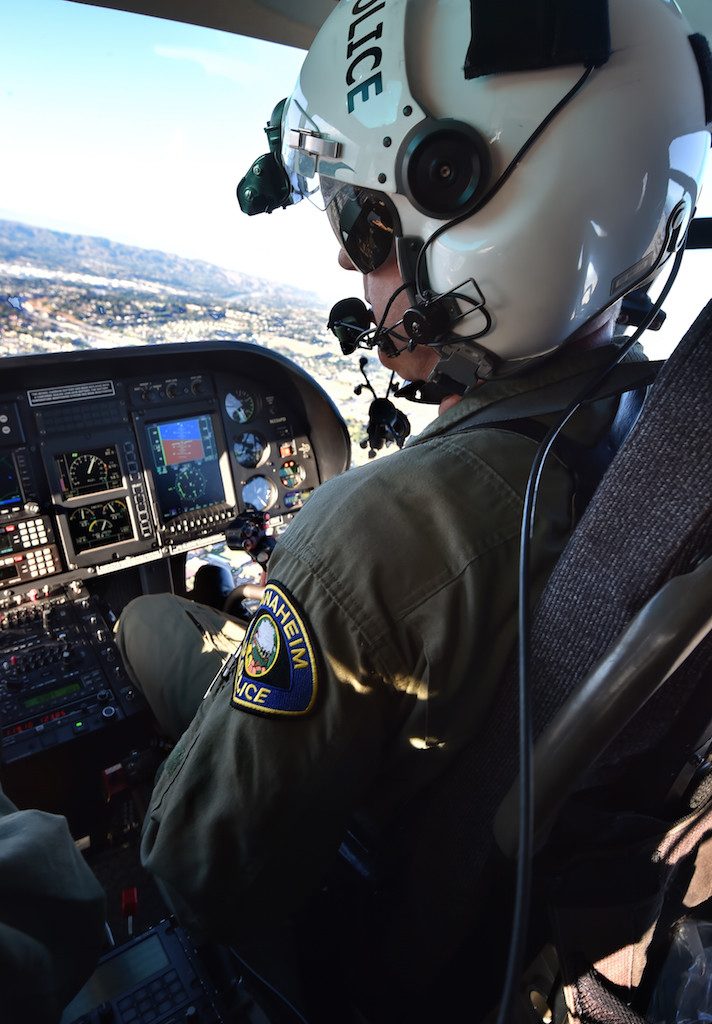
Jimmy Elliott of Anaheim PD sits on the right as he pilots the helicopter.
Photo by Steven Georges/Behind the Badge OC
Trainees will spend six months in observation before they even get a chance to actually do any test flights.
Back on the ground at the Air Support Facility in Fullerton, the two officers refuel Angel from an underground tank and head back into their building for some paperwork. Each half of their job has its own rewards. They love being in the air, but the office is quiet and the camaraderie is strong.
“It’s a neat environment,” Poland says. “But you go home tired and satisfied. What a great job this is.”
 Behind the Badge
Behind the Badge
